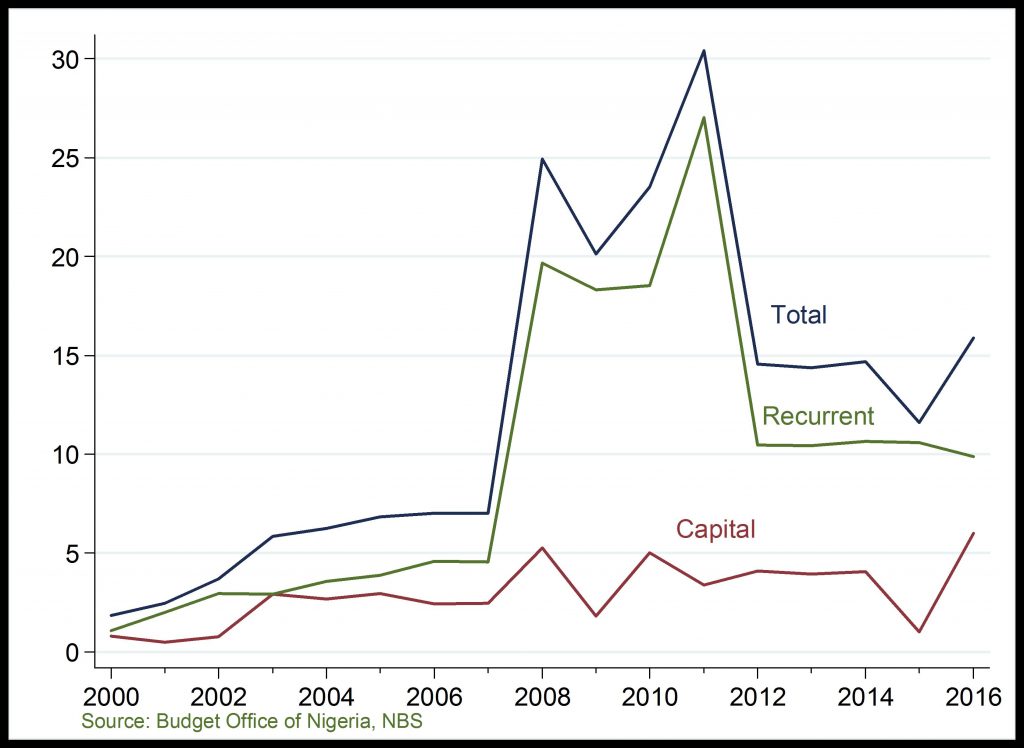Capital Importation And Budgetary Allocation (ITC)
Capital Importation (US$ Thousand)
Investor appetite in ITC, a recovery?

Budgetary Allocation (Billion )
Prioritizing ITC?

Capital Importation: Given the positive outlook on the ITC sector in the past few years, investments in the sector reached a 10-year peak in 2014. However, the foreign investment fell marginally in 2015 but show resurgence in 2016 possibly indicating investors rising appetite in the ITC sector.
Budgetary Allocation: Budgetary allocation for the sector increased significantly in 2016, signalling government interest in boosting ITC sector performance. Capital expenditure championed budget allocations in the sector, while recurrent spending recorded a slight decline.
Related
CPI and its Component: Changes in inflation rate has mostly been driven by the Core sub-index component. Precisely, in 2016 Q1 and Q2, the rising cost of import, electricity and transport drove inflat
External Reserve: External reserve picked up from its year-2000 level below $10,000 million to above $60,000 million in 2008. However, the external reserve fell deeply in 2010/11 and even further in 2
On average, Nigerias GDP growth rate has averaged about 5 percent; attaining an unusual trough of nearly -10 percent in 2003Q4 and a peak of nearly 20 percent in 2004Q4. However, the Nigerian economy
Gross Federally Collected Revenue: Both oil and non-oil components of gross federal revenue fell below N40 billion in 2016, after recording a peak of N90 billion in 2013. The decline was most prominen


